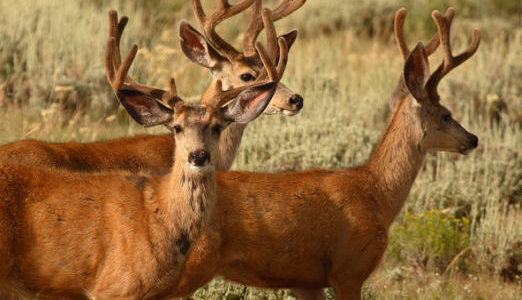Eagle Mountain is home to a wide variety of plants and animals. Though the city is rapidly developing, there are many proposals designed to conserve and protect the Cedar Valley’s native species.
Shon Reed, local wildlife expert, explains how land development can affect wildlife populations if no preventative action is taken.
“The biggest and most obvious is a reduction in available land use,” says Reed. “The mule deer migrate with a line of sight. If they see a path they want to go, they head that direction. Now if there’s a school in the way, a shopping center, their path is cut off and they have to find a new way.”
In addition, interrupting migratory patterns, land development can also harm the strength of wildlife populations.
“It’s not just a matter of moving elsewhere, their numbers are actually declining,” says Reed. “They’re losing nesting sites, they’re losing usable habitat, and there’s some thought that they’re also lost to pesticides, herbicides, rodenticides – secondary poisoning.”
There are ways to help the health of local wildlife as land in Eagle Mountain is developed.
“The biggest thing is just to get involved,” says Reed.
iNaturalist, an online community for individuals interested in biodiversity, is a great and easy way to contribute, according to Reed. Users can snap a picture of a plant or animal, tag a location and record the sighting.
“From that, we can start to base line what animals are being found, where they’re being found, in what numbers, and what time of year,” says Reed.
iNaturalist is available on desktop web browsers and as an app on most smartphones.
Residents may be uncertain which species of plant or animal being observed. The app can also help with species identification.
“It’s a citizen science, a very community-driven program,” says Reed.
Residents who are looking for more boots-on-the-ground-type of volunteer opportunities can get involved with the Nature and Wildlife Alliance in Eagle Mountain, according to Reed.
“As cheatgrass, fires, development, and land misuse have destroyed native habitats, we’ve tried to restore that as much as we can,” says Reed.
Residents can also help by planting native species in their own yards. Reed encourages people to avoid herbicides and rodenticides as much as possible because of their harmful effects on the environment.
“Pretty much everybody carries a camera in their pocket,” says Reed. “Snapping photos of local wildlife and then posting these to our local social media pages. Just snap a photo and post it. Anytime we build community interest, it goes a long way.”
There are countless more opportunities for residents to get involved in helping local wildlife populations. There is something for everyone.
For more information on volunteer opportunities in Eagle Mountain, contact the Eagle Mountain Nature and Wildlife Alliance.


